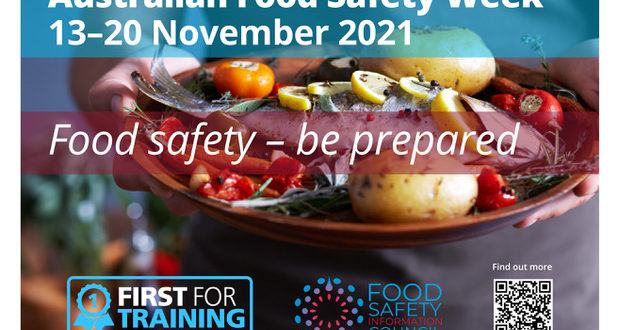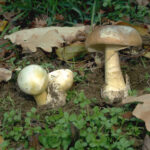
The Food Safety Information Council is launching the 25th Australian Food Safety Week 13 to 20 November by urging Australian consumers not to become complacent about food poisoning and to reduce their risk of becoming one of the estimated 4.1 million cases of food poisoning by being prepared with a food safety toolbox.
Cathy Moir, Council Chair, said that as we come out of COVID-19 lockdowns, we don’t want to put additional strain on our health systems through easily preventable cases of food poisoning.
‘For example, our recent research shows that there has been a 15% drop in people washing or sanitising their hands since the same time last year so we really want people to keep up a high rate of handwashing especially after going to the toilet and before handling food. This year’s theme ‘Food safety – be prepared’ is aimed at building resilience in the community by setting up a basic food safety toolkit and encouraging public engagement with food safety courses,’ Ms Moir said.
‘In addition to COVID-19, we have had increasing numbers of other natural disasters such as bushfires, floods and major power outages. We want our community to be prepared for these with a simple food safety toolbox that you can put together in advance and use in these 4 simple stages:
- Buy thermometers. Next time you are at the shops, or shop online, purchase a fridge thermometer and a cooking/meat thermometer which are available from kitchenware, hardware and BBQ/outdoor stores. They can cost as little as $15 for dial thermometers or you can get more accurate digital thermometers.
- Check your fridge temperature. Use your fridge thermometer to check your fridge is running at 5°C or below to stop the growth of most food poisoning bacteria and reduce food waste. ‘Use buy’ dates on refrigerated food only apply if your fridge is running at or below this temperature. Place the thermometer on a lower shelf where you can easily read it. When checking temperature do not keep the fridge door open too long as you are measuring air temperature.
- Use your cooking/meat thermometer. It won’t do any good if your thermometer never leaves your kitchen drawer! Use it to check that high risk foods such as poultry, mince, sausages, hamburger patties, liver, leftovers and rolled roasts reach at least 75°C in the centre. Egg dishes need to be at least 72 °C in the centre (or until the white is firm and the yolk thickens).
- Take a food safety course. We would love to see everyone in the community take a basic food safety course and learn more about food safety. This will help keep you and your family safer and open up job opportunities for you as food handlers in cafes and restaurants or in the child care, aged care and disability sectors. You will also need these food safety skills if you want to develop your newly developed culinary skills into a business, help at the school canteen or even run a community sausage sizzle find out more
‘Learn more about food safety and test your knowledge and take the food safety quiz on the Food Safety Information Council website www.foodsafety.asn.au ,’ Ms Moir concluded.
The Food Safety Information Council would like to thank their members First for Training – Award winning, endorsed, high quality, low cost training https://firstfortraining.com.au/ and the Australian Chicken Meat Federation for their charitable donations to support Australian Food Safety Week.
Media Contacts:
Lydia Buchtmann, Food Safety Information Council, 0407 626 688



